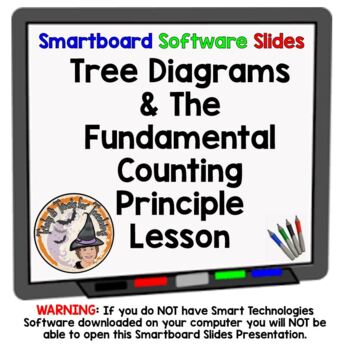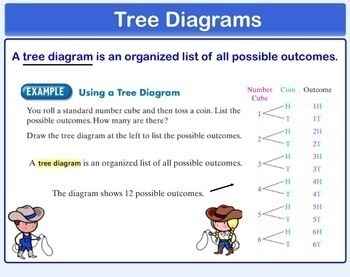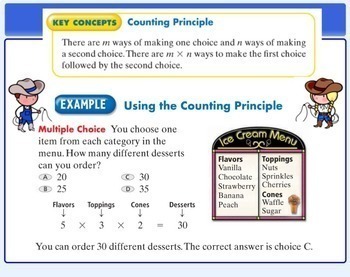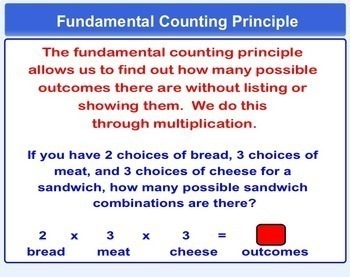Tree Diagrams and the Fundamental Counting Principle Smartboard Lesson
Tricks and Treats for Teaching
733 Followers
Grade Levels
4th - 7th
Subjects
Resource Type
Standards
CCSS7.SP.B.4
CCSS7.SP.C.8
CCSS7.SP.C.8a
CCSS7.SP.C.8b
Formats Included
- NOTEBOOK (SMARTboard) File
Pages
23 pages
Tricks and Treats for Teaching
733 Followers
Description
Teachers ~ You'll LOVE this! One of my best-selling Smartboard Lessons, that has 23 slides total. Great graphics and everything you'll need to teach Tree Diagrams and the Fundamental Counting Principle. Lots of interactive practice with students coming to Smartboard to solve problems too. You're students will love learning from these Smartboard Slides.
WARNING:
You MUST have SMART Technologies SMART software, and a SMARTBOARD to teach from, to effectively download, open and use this Interactive Smartboard Lesson. Go to https://legacy.smarttech.com/en/products/education-software/smart-learning-suite/download/trial to download a free trial.
Please be sure to L@@K at my other 1,285+ TERRIFIC teaching resources.
~ ~ THANK YOU KINDLY ~ ~
Total Pages
23 pages
Answer Key
Included
Teaching Duration
N/A
Report this resource to TPT
Reported resources will be reviewed by our team. Report this resource to let us know if this resource violates TPT’s content guidelines.
Standards
to see state-specific standards (only available in the US).
CCSS7.SP.B.4
Use measures of center and measures of variability for numerical data from random samples to draw informal comparative inferences about two populations. For example, decide whether the words in a chapter of a seventh-grade science book are generally longer than the words in a chapter of a fourth-grade science book.
CCSS7.SP.C.8
Find probabilities of compound events using organized lists, tables, tree diagrams, and simulation.
CCSS7.SP.C.8a
Understand that, just as with simple events, the probability of a compound event is the fraction of outcomes in the sample space for which the compound event occurs.
CCSS7.SP.C.8b
Represent sample spaces for compound events using methods such as organized lists, tables and tree diagrams. For an event described in everyday language (e.g., “rolling double sixes”), identify the outcomes in the sample space which compose the event.





